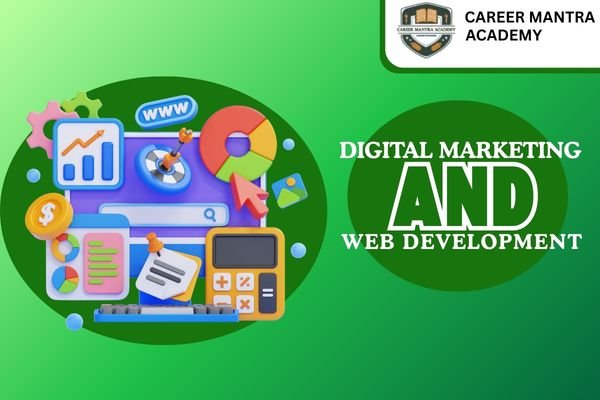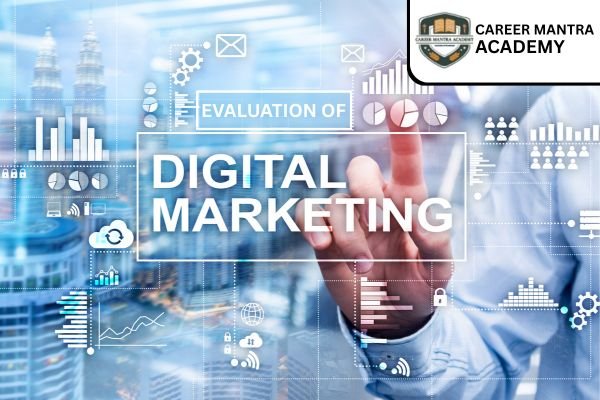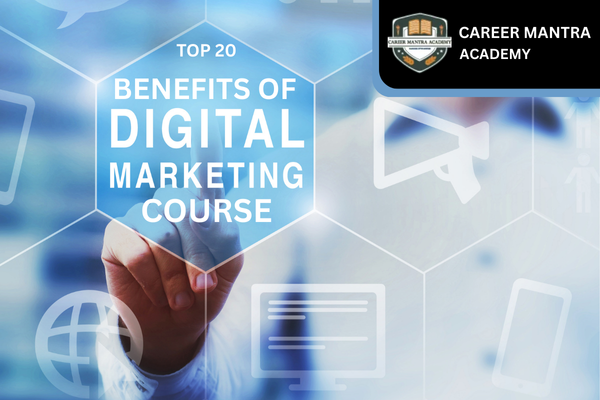Digital Marketing and Web Development: Building a Best Strong Online Presence in 2025
For Applying Digital Marketing Course Click Here… Digital Marketing and Web Development: A strong online presence is essential for businesses to thrive in today’s digitally-first world. Web development and digital marketing are two crucial pillars that enable this. Despite their apparent differences, they are closely related and together provide the framework for success on the internet. Building, designing, and maintaining websites is the main focus of web development. It guarantees that a company has a platform that is quick, easy to use, and functional for interacting with clients. A well-designed website conveys professionalism, offers a smooth user experience, and contributes to the credibility of the brand. But without visibility, even the most well-designed website cannot reach its full potential. Digital marketing can help with that. The tactic that increases website traffic, audience engagement, and visitor conversion is known as digital marketing. Among other things, it covers pay-per-click advertising, social media marketing, content marketing, and search engine optimization (SEO). Every one of these strategies guarantees that the appropriate audience discovers the website at the appropriate moment. Digital marketing and web development work in perfect harmony when combined. While effective marketing without a strong website will not be able to retain users, a beautifully designed website with inadequate marketing will remain invisible. Companies that combine the two can increase conversions, enhance customer engagement, and increase their online visibility. What is Digital Marketing? The promotion of goods, services, or brands via digital channels and online platforms is known as digital marketing. It covers tactics like paid advertising, email campaigns, content marketing, social media marketing, and search engine optimization (SEO). In contrast to traditional marketing, digital marketing emphasizes audience targeting, real-time data measurement, and customized customer experiences. Its primary objective is to establish a solid online presence and reputation for the brand while drawing in, interacting with, and converting potential clients. What is Web Development? The process of building, designing, and maintaining websites to make sure they are useful, easy to use, and aesthetically pleasing is known as web development. It encompasses full-stack development, which combines front-end (what users see), back-end (server, database, and application logic), and front-end development. A well-designed website offers security, mobile responsiveness, quick loading times, and smooth navigation. Coding is only one aspect of web development; other tasks include performance, accessibility, and integration with digital marketing tools to support online business growth. Why is Web Development Important for Digital Marketing Success? Since every campaign eventually directs traffic to a website, web development is the foundation of digital marketing. A well-designed, user-friendly website that successfully turns visitors into devoted customers is the foundation of a strong online presence. Even the most inventive marketing techniques will have trouble producing results without a strong website. Here’s why web development is essential for digital marketing success: In summary, web development provides the strong foundation that digital marketing needs to thrive. It ensures visibility, improves user satisfaction, and helps businesses achieve higher engagement and conversions. How Does SEO Link Digital Marketing and Web Development? Web development and digital marketing are connected by SEO (Search Engine Optimization). Web development makes sure the website is technically optimized to rank well, while digital marketing concentrates on increasing traffic. Elements like URL structure, mobile responsiveness, site speed, and clean coding directly impact SEO performance. To attract the target audience, digital marketing strategies also utilize backlinks, keywords, and SEO-driven content. Even a well-designed website may remain invisible without SEO, and SEO campaigns may not produce the desired results without adequate web development. When combined, they guarantee that websites not only draw in more visitors but also offer a seamless user experience that maintains user engagement and promotes conversions. How Does Website Design Influence User Experience and Conversions? User experience (UX) is greatly influenced by website design, which also has a direct effect on conversion rates. A website that is easy to use and visually appealing encourages users to stay longer, explore the content, and take action. However, regardless of how successful the marketing campaign is, a poorly designed website can drive users away. Key ways website design influences UX and conversions: In short, website design is more than looks—it enhances usability, fosters trust, and drives higher engagement, ultimately leading to improved conversions. What Role Does Content Marketing Play in Web Development? Web development and content marketing collaborate to build a strong online presence. A website’s structure and design are provided by web development, but its content marketing adds useful, interesting, and optimized content. Landing page content, videos, infographics, and blogs all contribute to increasing search engine rankings and drawing in visitors. A well-designed website guarantees that this content is presented efficiently, with simple navigation, quick loading times, and a mobile-friendly layout. In addition to educating users and guiding them through the sales funnel, high-quality content also fosters trust. Web development and content marketing work together to make sure that people find the website, stay on it, interact with it, and become customers. How Can Social Media Be Integrated Into Websites for Marketing Growth? Businesses looking to increase online visibility and engagement must incorporate social media into their websites. Social media sites like Twitter, Facebook, Instagram, and LinkedIn are excellent resources for increasing brand awareness, boosting traffic, and establishing connections with possible clients. Businesses can establish a smooth digital marketing ecosystem by integrating these platforms with a well-designed website. Here are key ways to integrate social media effectively: Integrating social media strengthens both marketing and web development efforts. It increases website traffic, encourages audience interaction, enhances brand loyalty, and ultimately drives conversions. In today’s digital era, businesses that combine strong web development with active social media integration gain a competitive edge and foster long-term growth. Why Is E-commerce Development Closely Tied to Digital Marketing? Since a strong online store serves as the cornerstone of any marketing campaign, e-commerce development and digital marketing are closely related. A seamless shopping experience is created by web development, which guarantees that the website is quick, safe, mobile-responsive, and easy to use. Through paid advertisements,





